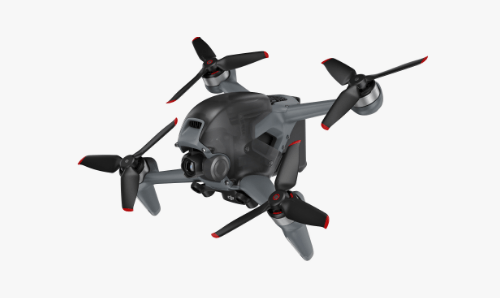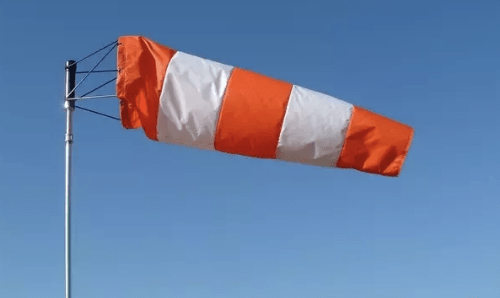Blog (Hot Takes)
Our take on what's hot and what's not in the world of Unmanned Aerial Vehicles
 BVLOS: Beyond Visual Line of Sight is coming
BVLOS Beyond Visual Line of Sight is coming whether the CAA or DfT want it or not. It would be great to believe that it is as a result of some life saving innovation or as a regulatory change to improve humanity and drive innovation. However, the unstoppable force to drive this through will be the lobbyists from “Big Retail”. The first Drone you see flying across the city without a pilot in sight will be more likely delivering replacement ink cartridges from Amazon than it will a replacement heart.
BVLOS: Beyond Visual Line of Sight is coming
BVLOS Beyond Visual Line of Sight is coming whether the CAA or DfT want it or not. It would be great to believe that it is as a result of some life saving innovation or as a regulatory change to improve humanity and drive innovation. However, the unstoppable force to drive this through will be the lobbyists from “Big Retail”. The first Drone you see flying across the city without a pilot in sight will be more likely delivering replacement ink cartridges from Amazon than it will a replacement heart.
 Drone could be better utilised for search and rescue but are tied by regulation
Think of a police helicopter using Thermal Imaging to track down the bad guys on “Police Camera Action”. Now think how useful a Drone could be in the Highlands of Scotland working a pre-programmed grid looking for a missing walker. Running out of battery? No problem send up a second to work a second grid or carry on from where the last one left off. Sound good? Sound useful? Unfortunately this is not currently allowed, you must keep the Drone within sight of the pilot regardless of whether the area you are searching is miles away from anyone (or anything else).
Drone could be better utilised for search and rescue but are tied by regulation
Think of a police helicopter using Thermal Imaging to track down the bad guys on “Police Camera Action”. Now think how useful a Drone could be in the Highlands of Scotland working a pre-programmed grid looking for a missing walker. Running out of battery? No problem send up a second to work a second grid or carry on from where the last one left off. Sound good? Sound useful? Unfortunately this is not currently allowed, you must keep the Drone within sight of the pilot regardless of whether the area you are searching is miles away from anyone (or anything else).
 Drones over sporting events and the seriousness of busting a RA(T).
Recently, a Premier League football match between Southampton and Aston Villa was halted for ten minutes when a drone was spotted flying over the pitch at St. Mary's. 42 minutes into the match, the players were taken off the pitch, said to be over concerns for their safety. There are also other reasons revolving around the licencing of footage of a Premier League game.
This is not the first instance of such an occurrence. Last season, a game between Brentford and Wolverhampton Wanderers at GTech Community Stadium was halted for around twenty minutes.This is not specific to actual matches, either.
Recently, Leicester City management was concerned about a drone which may have been spying on their training methods and tactics prior to a match with Brighton. Sporting events often have an RA(T) established over their location. These are temporary restricted areas and are published in the NOTAMs. This excludes ALL unauthorised air-traffic, manned or unmanned.
Too many people rely on the GCS software which comes with their drone, thinking that if the drone does not complain about a geofenced area, then it must be legal to fly. This is a common misconception and one which has led to many airspace infringements including one last year where someone flew into Perth Airport's ATZ with a DJI Phantom.
Perth Airport is the busiest airport in Scotland and the 7th busiest in the entire UK, with two flight schools, helicopter sight-seeing, and the Scottish Charity Air Ambulance as well as chartered and private aviation all operating from that airfield. The tower sent someone out to track down the operator who was surprised when told that he had busted Perth's airspace and defended his decision to fly by arguing that his software didn't warn him that he was near an airport. Had he been properly trained and had been operating in accordance with that training, he would have seen from a sectional chart that he was within the ATZ and he would also have checked the NOTAMs which would have informed him of any potential helicopter sight-seeing operations being conducted from the airfield at the time.
As an additional layer of mitigation, he could also have utilised a scanner tuned to 121.080MHz in order to listen to the arrivals and departures from the airfield. None of these simple mitigations were implemented and the drone operator unknowingly inconvenienced a number of flights. There is quite a deficiency in the standard of some of the training provided to drone operators and it is far too easy to simply buy one off the shelf or from an online marketplace and inadvertently violate restricted airspace without understanding or even being aware of the potential for trouble.
Even amongst those who are aware of the regulations, there still persists an attitude that they are going to do whatever they like regardless of the consequences, or even danger, to others. Too many refuse to believe that there is any real danger from such a small toy. RA(T)s may be established for many other reasons besides sporting events. A common one is for the segregation of royal flights (or those carrying other dignitaries) from other traffic. Launching a drone into a RA(T) over a sporting event might lead to the operator being in hot-water but you won't get off so lightly if you pose a potential threat to Rainbow One Romeo or Air Force One. That could really ruin your day.
Always check a sectional chart and apprise yourself of the current NOTAMs prior to flight. Situational Awareness is foundational to aviation safety, and at a bare minimum, it might just prevent an uncomfortable day in court.
Drones over sporting events and the seriousness of busting a RA(T).
Recently, a Premier League football match between Southampton and Aston Villa was halted for ten minutes when a drone was spotted flying over the pitch at St. Mary's. 42 minutes into the match, the players were taken off the pitch, said to be over concerns for their safety. There are also other reasons revolving around the licencing of footage of a Premier League game.
This is not the first instance of such an occurrence. Last season, a game between Brentford and Wolverhampton Wanderers at GTech Community Stadium was halted for around twenty minutes.This is not specific to actual matches, either.
Recently, Leicester City management was concerned about a drone which may have been spying on their training methods and tactics prior to a match with Brighton. Sporting events often have an RA(T) established over their location. These are temporary restricted areas and are published in the NOTAMs. This excludes ALL unauthorised air-traffic, manned or unmanned.
Too many people rely on the GCS software which comes with their drone, thinking that if the drone does not complain about a geofenced area, then it must be legal to fly. This is a common misconception and one which has led to many airspace infringements including one last year where someone flew into Perth Airport's ATZ with a DJI Phantom.
Perth Airport is the busiest airport in Scotland and the 7th busiest in the entire UK, with two flight schools, helicopter sight-seeing, and the Scottish Charity Air Ambulance as well as chartered and private aviation all operating from that airfield. The tower sent someone out to track down the operator who was surprised when told that he had busted Perth's airspace and defended his decision to fly by arguing that his software didn't warn him that he was near an airport. Had he been properly trained and had been operating in accordance with that training, he would have seen from a sectional chart that he was within the ATZ and he would also have checked the NOTAMs which would have informed him of any potential helicopter sight-seeing operations being conducted from the airfield at the time.
As an additional layer of mitigation, he could also have utilised a scanner tuned to 121.080MHz in order to listen to the arrivals and departures from the airfield. None of these simple mitigations were implemented and the drone operator unknowingly inconvenienced a number of flights. There is quite a deficiency in the standard of some of the training provided to drone operators and it is far too easy to simply buy one off the shelf or from an online marketplace and inadvertently violate restricted airspace without understanding or even being aware of the potential for trouble.
Even amongst those who are aware of the regulations, there still persists an attitude that they are going to do whatever they like regardless of the consequences, or even danger, to others. Too many refuse to believe that there is any real danger from such a small toy. RA(T)s may be established for many other reasons besides sporting events. A common one is for the segregation of royal flights (or those carrying other dignitaries) from other traffic. Launching a drone into a RA(T) over a sporting event might lead to the operator being in hot-water but you won't get off so lightly if you pose a potential threat to Rainbow One Romeo or Air Force One. That could really ruin your day.
Always check a sectional chart and apprise yourself of the current NOTAMs prior to flight. Situational Awareness is foundational to aviation safety, and at a bare minimum, it might just prevent an uncomfortable day in court.
 Wind Limits
Recently, Scotland has been experiencing very high winds and as a result, we have had to postpone many of our flights. Respecting UAV wind limits is crucial for ensuring the safety of the aircraft, its crew, and any individuals or property in the vicinity. Strong winds can cause significant turbulence and make it difficult for the pilot to control the UAV, leading to accidents or damage to the equipment. Additionally, high wind speeds can make it difficult for the UAV to maintain a stable hover, which is necessary for many types of aerial operations.
At Airobot Dynamics, we implement a general rule of not launching into a wind exceeding one half of the maximum speed of the UAV. This is a smart safety measure that helps to ensure the stability and control of the aircraft. This rule is in line with industry standards and guidelines, which recommend that UAVs should not be flown in winds that exceed a certain percentage of their maximum speed. This helps to prevent the UAV from being pushed beyond its operational capabilities, which can lead to accidents or damage to the equipment. By postponing flights in high wind conditions, operators are taking a responsible approach to safety that protects their assets and helps prevent incidents and accidents.
It's important to always be aware of the weather conditions and make sure that flights are conducted only when conditions are suitable to ensure that operators can be confident that their UAVs will be able to perform their intended missions safely and effectively, while also minimizing the risk of incidents.
Wind Limits
Recently, Scotland has been experiencing very high winds and as a result, we have had to postpone many of our flights. Respecting UAV wind limits is crucial for ensuring the safety of the aircraft, its crew, and any individuals or property in the vicinity. Strong winds can cause significant turbulence and make it difficult for the pilot to control the UAV, leading to accidents or damage to the equipment. Additionally, high wind speeds can make it difficult for the UAV to maintain a stable hover, which is necessary for many types of aerial operations.
At Airobot Dynamics, we implement a general rule of not launching into a wind exceeding one half of the maximum speed of the UAV. This is a smart safety measure that helps to ensure the stability and control of the aircraft. This rule is in line with industry standards and guidelines, which recommend that UAVs should not be flown in winds that exceed a certain percentage of their maximum speed. This helps to prevent the UAV from being pushed beyond its operational capabilities, which can lead to accidents or damage to the equipment. By postponing flights in high wind conditions, operators are taking a responsible approach to safety that protects their assets and helps prevent incidents and accidents.
It's important to always be aware of the weather conditions and make sure that flights are conducted only when conditions are suitable to ensure that operators can be confident that their UAVs will be able to perform their intended missions safely and effectively, while also minimizing the risk of incidents.
 Drone Delivery
Often featuring in sci-fi films as an outrageous concept in the distant future, it may come as a surprise that Drone delivery is already happening all around the globe and has been since around 2013. As Drone technology advances and customer demand increases, many companies are looking to implement a Drone Delivery service to reduce operational costs and meet unprecedented demand.
- Aerial Drones don’t need to contend with road traffic, speeding up delivery times
- Cheaper than fuelling a fleet of vehicles
- Drone delivery will revolutionise the way we shop
- Better for the environment, as Drones emit far less pollution than traditional delivery vehicles
Drone Delivery
Often featuring in sci-fi films as an outrageous concept in the distant future, it may come as a surprise that Drone delivery is already happening all around the globe and has been since around 2013. As Drone technology advances and customer demand increases, many companies are looking to implement a Drone Delivery service to reduce operational costs and meet unprecedented demand.
- Aerial Drones don’t need to contend with road traffic, speeding up delivery times
- Cheaper than fuelling a fleet of vehicles
- Drone delivery will revolutionise the way we shop
- Better for the environment, as Drones emit far less pollution than traditional delivery vehicles
 Preventing landslides with mass mountain seeding using Unmanned Aerial Vehicles (UAVs)
The mass mountain-seeding using drones saved billions of pounds and prevented further landslides
Preventing landslides with mass mountain seeding using Unmanned Aerial Vehicles (UAVs)
The mass mountain-seeding using drones saved billions of pounds and prevented further landslides
 Minimizing Revenue Losses with Condition Reporting using UAVs
Drones are used to survey a large house quickly and identify the exact locations for maintenance, averting event cancellations and the resulting loss of revenue
Minimizing Revenue Losses with Condition Reporting using UAVs
Drones are used to survey a large house quickly and identify the exact locations for maintenance, averting event cancellations and the resulting loss of revenue
 Efficacy of Drones in Powerline Corridor Vegetation Detection
ACS and ABD used drones to help a Powerline company survey the vegetation incursion efficiently and cost-effectively
Efficacy of Drones in Powerline Corridor Vegetation Detection
ACS and ABD used drones to help a Powerline company survey the vegetation incursion efficiently and cost-effectively
Thank you for your message, we will get back to you soon.
Oops!, There was a glitch. Please email us at info@anyaconsultancy.com